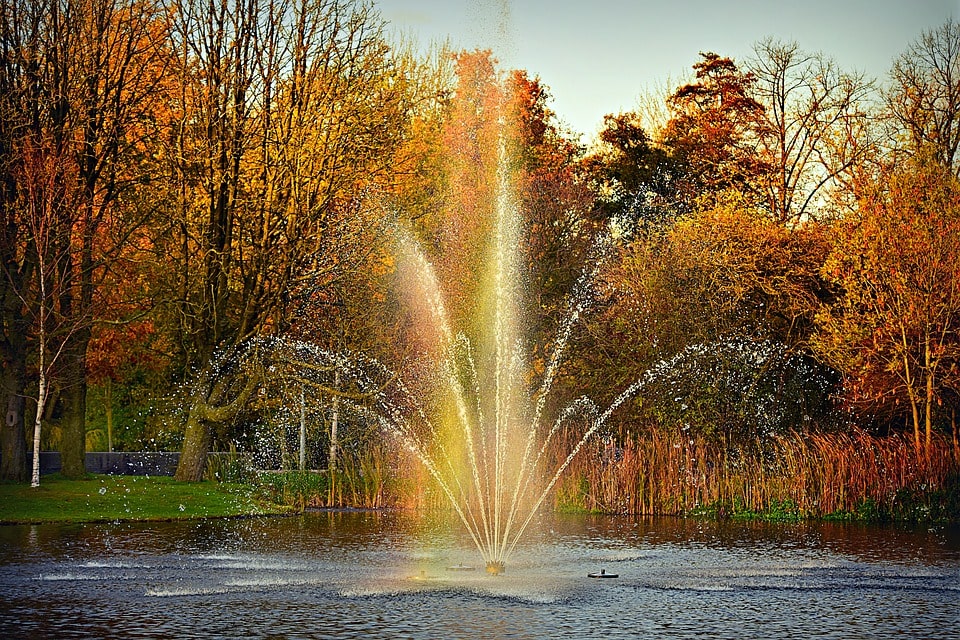
Fall Pond Prep
When fall arrives that means it is time to prep your pond for the cold winter ahead. In many parts of the country, the weather is still quite warm. So the fall season can start at different times depending on what part of the country you are in. When you do feel that shift in the weather, then it is time for fall pond prep.
Fall Pond Maintenance
Fall is the time when you start to do clean up around the pond and prepping it for the long cold winter months. During the fall season ponds can become covered in fallen leaves, and other organic fallen foliage, all which can cause problems in a pond. Skimming off the dead leaves from the pond surface along with removing or raking leaves and other debris from around the pond’s shore will make a huge difference in minimizing the buildup of organic material that will start to decay at the bottom of the pond. Depending on the size of the pond will determine how big this job is, and if possible, it should be done.
Also now is the time to trim back dead, dying, or overgrown foliage from aquatic plants. This will help reduce the amount of skimming you will have to do in the pond. Also, a good idea, if you have any unwanted plant species in your pond, now is the time to remove, before the winter freeze.
Because water temperatures are starting to fall, the amount of food the fish need is lower, so you should reduce the amount of food you feed them. The temperature of the water affects a fish’s metabolic rate and as water gets colder, their metabolism slows. If you continue to feed them the same amount you did during the summer, you will create excess waste and bottom muck or possibly cause the fish to die.
You should continue with your regular beneficial bacteria applications as you normally do throughout the year and check your equipment for clogs or damage and structures for erosion to ensure everything is operating well and repair anything to illuminate the possibility for costlier damage.
Winter Pond Maintenance
Depending on what part of the country you live, the winter months can mean more pond maintenance for some and very little for others. If proper maintenance is done during the fall, like cleaning pond equipment and raking up dead and overgrowth of plant material, there is usually not much to do during the winter months. As the water temperature goes down, the fish require virtually no food, as they are very inactive. In addition, colder water retains dissolved oxygen better, meaning oxygen levels do not deplete like in the summer. However, in areas where temperatures get low enough to freeze a pond solid, there are some things that you need to do to ensure your pond and its inhabitants can survive the harsh winter.
The most important thing to remember for winter is to not let the pond freeze over completely. If this happens, the gases that are produced during decomposition of the organic material become trapped and cannot escape. This will pollute the water. Also, similar to these toxic gases not able to escape, oxygen cannot get in, and that is double trouble. The best solution to this is the use of a de-icer. A de-icers is a device that is used to thaw ice from the surface of a pond. This unit is not meant to thaw an entire pond, just keeps a small area open so that oxygen transfer can occur. To make it simpler, it can be placed in the shallow part of the pond and depending on the size and ice accumulation in a pond, two de-icers might be needed.






